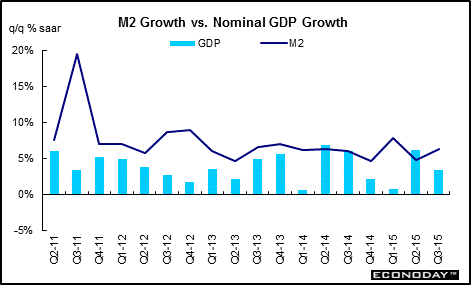
|
Long Term Perspective Just about every economic indicator has its 15 minutes of fame. Money supply, released every week by the Federal Reserve, was closely watched in the 1980s. Changes in money supply are supposed to mirror changes in economic growth. The missing link in the relationship is velocity – the rate at which money turns over in the economy. M2 includes currency, checking accounts, money market accounts, and small savings accounts at banks. The relationship between growth in M2 and growth in GDP is not as good as it used to be, but some diehard money supply fans remain. And with the Fed's prior focus on pumping liquidity to ease the credit crisis, more are paying attention. However, flight to safety (from money market mutual funds to more liquid and safer instruments in M1 and M2) and reversal of flight to safety have caused volatile swings in M2 growth since the last recession and financial crisis.
Short Term Perspective M2 growth slowed significantly in 2009 and much of 2010. The pace was about a 12 to 15 percent annualized pace during late 2008 and early 2009 but slowed to a range of zero to 3 percent in most of 2009 and early 2010. The slowing was likely the result of still tight lending by banks. A sluggish economy softened money growth in early 2011 and there was a curiosity in M2 growth in the third quarter of that year as growth surged to an annualized 17.6 percent. This reflected flight to safety from mutual funds and other trading accounts not in M2 to cash types of funds that are in M2. More recently, third quarter 2015 growth in M2 posted at 6.8 percent annualized. Nominal GDP growth for the third quarter came in at 3.4 percent following a strong advance, one tied to an easy comparison with the severe weather of the first quarter, of 6.1 percent annualized in the second quarter.
|
|||||||
| Legal Notices | ©Copyright 1998-2024 Econoday, Inc. |
powered by
![[Econoday]](images/logo.gif)
![[Apple App Store]](/images/AppleAppStore.png) ![[Econoday on Kindle]](/images/kindle.jpg) 
|
||||||
